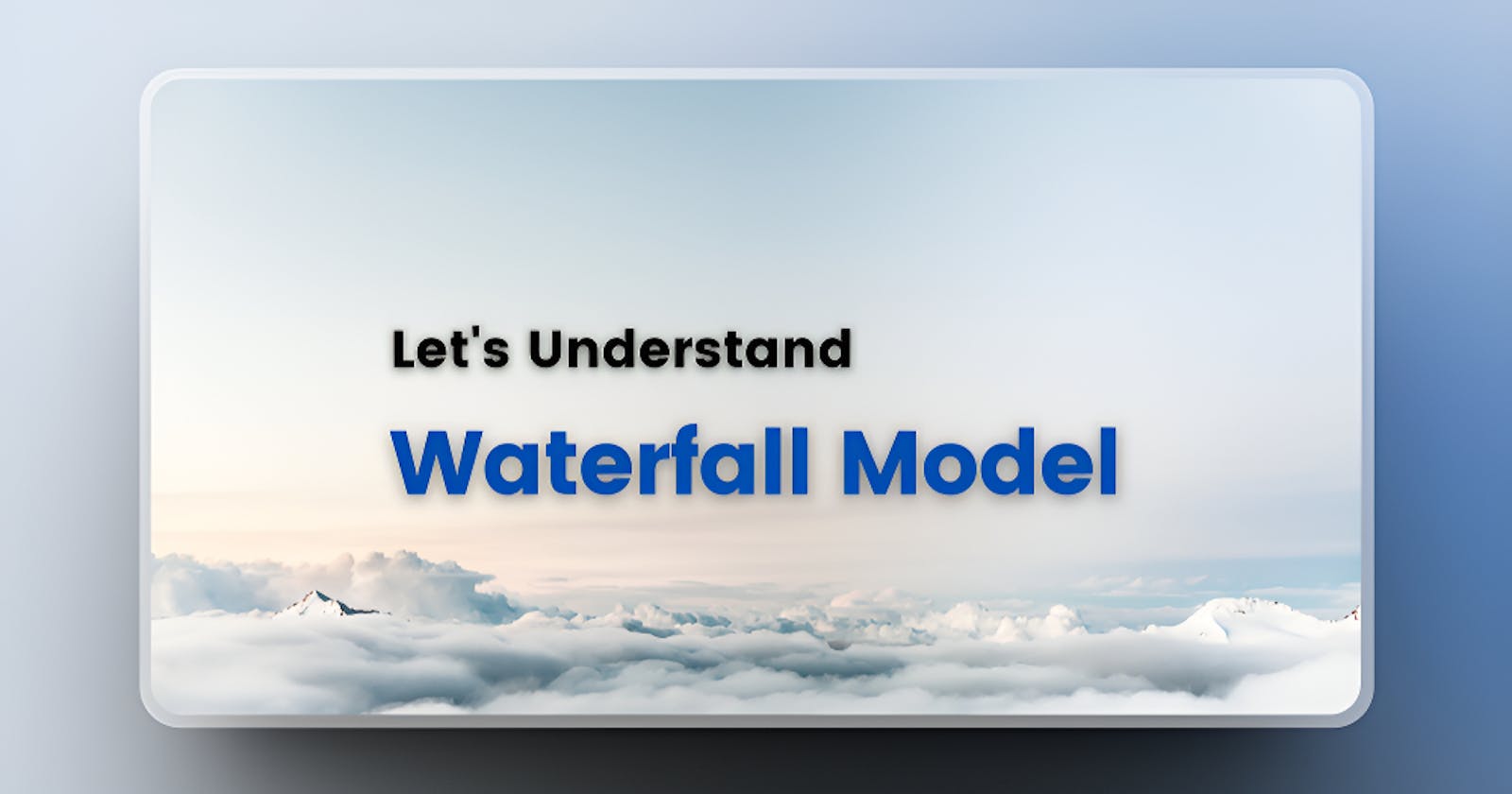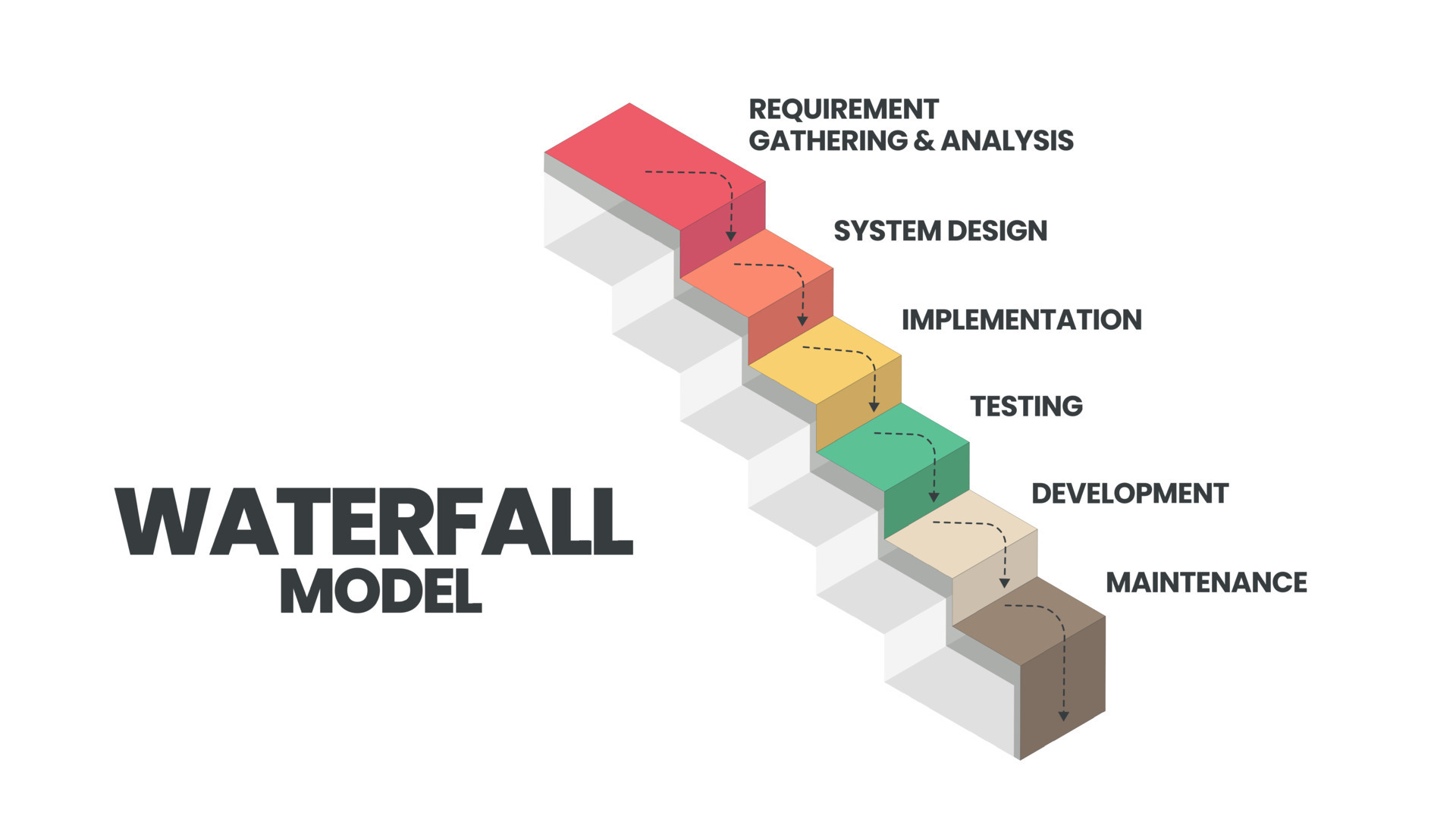Waterfall Model and Its Application in Software Projects

Intro
Welcome to this comprehensive guide on the Waterfall model and its application in software projects. In this article, we will explore the Waterfall model, its benefits, drawbacks, and how it is utilized in the software development process.
Whether you're a software developer, project manager, or simply curious about software development methodologies, this article will provide you with valuable insights into the Waterfall model and its practical implications.
What is the Waterfall Model?
The Waterfall model is a sequential software development methodology that follows a linear, step-by-step approach. It consists of distinct phases, where each phase must be completed before progressing to the next. The flow of the development process in the Waterfall model resembles a waterfall, hence the name.

History of the Waterfall Model
The Waterfall model was first introduced by Winston W. Royce in a paper published in 1970. Royce initially presented it as an example of a flawed software development process, but it gained popularity due to its simplicity and structured nature. Over time, the Waterfall model has been refined and adapted to meet the evolving needs of software development projects.
Phases of the Waterfall Model
1. Requirements Gathering
In this initial phase, the project requirements are gathered and documented. The goal is to understand the client's needs, business objectives, and functional specifications of the software. Proper communication between the development team and stakeholders is crucial during this phase to ensure a clear understanding of the project scope.
2. System Design
Once the requirements are gathered, the system design phase begins. The software architecture, components, and modules are defined in detail. This phase focuses on creating a blueprint for the software solution that aligns with the project requirements. Design documents, such as flowcharts and data models, are prepared during this phase.
3. Implementation
The implementation phase involves the actual coding and development of the software. The design specifications from the previous phase are translated into working code. Programmers write code according to the predefined design and coding standards. This phase requires a high level of technical expertise and attention to detail.
4. Testing
After the software is developed, it undergoes rigorous testing to ensure its functionality, reliability, and quality. Testers execute various test cases to identify defects and errors. The testing phase includes unit testing, integration testing, system testing, and acceptance testing. It is crucial to identify and resolve any issues before proceeding to the next phase.
5. Deployment
Once the software passes the testing phase, it is ready for deployment. The software is installed on the target environment, and the necessary configurations are set up. This phase involves activities like data migration, user training, and system documentation. The software is now available for end-users to utilize.
Advantages of the Waterfall Model
The Waterfall model offers several advantages in the software development process:
Clear Project Structure: The linear nature of the Waterfall model provides a clear structure and roadmap for the project, making it easy to understand and follow.
Early Documentation: The emphasis on documentation ensures that project requirements, design specifications, and testing procedures are well-documented from the beginning.
Project Visibility: Stakeholders have a clear understanding of the project's progress at each phase, enabling better decision-making and resource allocation.
Suitable for Stable Requirements: The Waterfall model works well when the project requirements are stable and unlikely to change significantly during development.
Well-suited for Large Teams: The structured nature of the Waterfall model allows large teams to work efficiently on different phases simultaneously.
Disadvantages of the Waterfall Model
While the Waterfall model has its advantages, it also has some drawbacks:
Rigid and Inflexible: The sequential nature of the Waterfall model makes it challenging to accommodate changes and adapt to evolving requirements.
Late Error Detection: Defects and errors are often identified late in the process, typically during the testing phase, leading to higher costs and delays.
Limited Client Involvement: Clients have limited opportunities for involvement and feedback during the development process, which may result in a final product that does not meet their expectations.
Difficulty in Measuring Progress: Since each phase is completed before moving to the next, it can be challenging to measure progress accurately.
Lack of Iteration: The Waterfall model does not allow for iterative improvements and feedback loops, which are essential for achieving optimal software quality.
Waterfall Model vs. Agile Methodology
The Waterfall model is often contrasted with Agile methodology, which promotes an iterative and collaborative approach to software development. While the Waterfall model follows a sequential process, the Agile methodology emphasizes adaptability, flexibility, and continuous improvement. The choice between the two depends on the project's requirements, complexity, and the organization's development culture.
Waterfall Model in Large-Scale Software Projects
The Waterfall model is commonly used in large-scale software projects, where a structured and organized approach is necessary. Large projects often involve multiple teams, stakeholders, and dependencies. The Waterfall model's clear phases and documentation help manage complexity and ensure efficient collaboration.
Waterfall Model in Small-Scale Software Projects
Although the Waterfall model is often associated with large-scale projects, it can also be used in small-scale software development. Small projects with well-defined requirements and limited scope can benefit from the Waterfall model's simplicity and clarity.
Waterfall Model in Regulated Industries
Regulated industries, such as healthcare and finance, often require strict adherence to compliance standards and documentation. The Waterfall model's emphasis on thorough documentation makes it a suitable choice for software development projects in regulated industries.
Waterfall Model and Documentation
Documentation plays a crucial role in the Waterfall model. Each phase requires detailed documentation, including requirements specifications, design documents, test plans, and user manuals. Thorough documentation ensures clarity, facilitates
future maintenance, and aids in knowledge transfer.
Waterfall Model in Quality Assurance
The Waterfall model allows for comprehensive testing at each phase, ensuring that quality is built into the software. Testers have dedicated phases for testing, allowing them to focus on specific aspects of the software and identify defects early.
Waterfall Model in Project Management
Project management in the Waterfall model follows a structured approach, with well-defined milestones and deliverables. Project managers oversee the progress of each phase, manage resources, and ensure timely completion of the project.
Waterfall Model in Risk Management
Risk management is an integral part of software projects, and the Waterfall model allows for a systematic approach to identify, assess, and mitigate risks. Risks are evaluated at each phase, and appropriate measures are taken to minimize their impact.
Waterfall Model and Team Collaboration
Team collaboration in the Waterfall model is primarily focused on sharing information and knowledge across different phases. Each team works on their respective phase, and effective communication channels are crucial to ensure smooth transitions and handoffs.
Waterfall Model and Client Communication
Client communication in the Waterfall model primarily occurs during the initial requirements-gathering phase and the final product delivery phase. It is essential to establish clear communication channels and manage client expectations throughout the project.
Waterfall Model and Change Management
Change management in the Waterfall model can be challenging due to its sequential nature. Changes in requirements or design often require revisiting previous phases, which can result in delays and additional costs. Proper change management processes should be in place to handle change requests effectively.
Waterfall Model and Deadlines
The Waterfall model's structured approach allows for better estimation and management of project deadlines. Each phase has its own timeline and deliverables, enabling project managers to set realistic deadlines and track progress accordingly.
Waterfall Model and Cost Estimation
Cost estimation in the Waterfall model relies on detailed requirements gathering and a thorough understanding of the project scope. The clear project structure facilitates accurate cost estimation, enabling stakeholders to allocate resources effectively.
Waterfall Model and Scalability
The Waterfall model is well-suited for projects with well-defined requirements and limited scalability needs. However, for projects requiring frequent iterations and scalability, Agile methodologies like Scrum or Kanban are more suitable.
Waterfall Model in Software Maintenance
Software maintenance is an ongoing process, and the Waterfall model can be utilized for maintenance activities. Proper documentation and change management processes help maintain the software's integrity and support future enhancements.
Waterfall Model and User Experience
The Waterfall model's focus on requirements gathering and design allows for considering user experience early in the development process. By defining user requirements and designing intuitive interfaces, the Waterfall model can contribute to a positive user experience.
Waterfall Model and Security
Security considerations should be integrated into each phase of the Waterfall model. From requirements gathering to implementation and testing, security measures should be implemented to ensure the software's robustness against potential threats.
Waterfall Model and Performance Optimization
Performance optimization can be addressed during the design and implementation phases of the Waterfall model. By considering performance requirements and implementing efficient algorithms and coding practices, software performance can be optimized.
Waterfall Model and Project Success Metrics
Project success metrics in the Waterfall model are often tied to meeting project milestones, delivering within budget and time constraints, and fulfilling the project's initial objectives. Success is evaluated based on adherence to the planned schedule and the quality of the delivered software.
Conclusion
In conclusion, the Waterfall model is a widely used software development methodology that follows a sequential approach. It provides a clear project structure, emphasizes documentation, and is suitable for projects with stable requirements. While the Waterfall model has its advantages and disadvantages, it remains a valuable approach in certain contexts, such as large-scale projects and regulated industries.
Understanding the Waterfall model and its application in software projects can help project managers, developers, and stakeholders make informed decisions and achieve successful outcomes.
Thanks for reading 🫡, See you in the next blog.
 Develop and Solve
Develop and Solve